Fun facts
245 articles
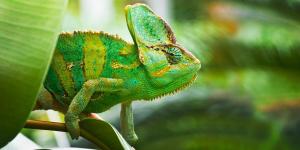
Chameleons are captivating reptiles renowned for their ability to shift colors seemingly at will. From vibrant greens that mimic rainforest foliage to fiery oranges that stand out on sun-drenched branches. But what drives this remarkable adaptation? The answer lies within a fascinating biological innovation:...
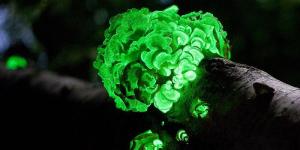
While bioluminescence might seem like something out of science fiction, it's a real natural phenomenon. Living organisms harness chemical reactions to produce their own light. From fireflies dancing in the summer sky to deep-sea wonders glowing in the abyss, this remarkable ability serves a multitude of purposes...

Bioluminescent beaches are the coastal areas where living beings produce light as the waves meet the sand. This light emission is known as bioluminescence and is caused by something known as a chemiluminescent reaction. Although there are beaches which are known for their bioluminescence, it is important to know it...

Spain's identity isn't solely defined by its mainland. The Spanish coastline stretches for thousands of kilometers, incorporating a range of islands that vary in size and character. Dotted across the Mediterranean and Atlantic waters lie a remarkable 179 islands and islets. These islands offer more than...

In the wild world, survival hinges on a delicate balance of power. Predators rely on weapons honed by evolution, and few are more crucial than a powerful bite. But who packs the most punishing chomp? This isn't just about razor-sharp teeth. We'll delve into the science behind jaw strength, skull structure,...

Did you know that even though Earth is mostly water, only a tiny amount is the kind we can drink? Our planet is covered in vast oceans filled with salty water, but have you ever wondered why the sea is salty? The answer has to do with what's dissolved in the water and how the sun plays a sneaky trick.
In...
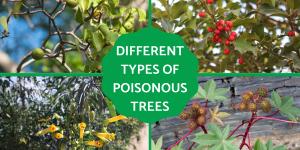
While we don't think of them as being dangerous, certain tree species are poisonous and toxic to humans. These deadly species may seem harmless to the untrained eye, but botanists have learned over the years that trees have surprising ways of defending themselves. This concept of a plant's self-preservation...
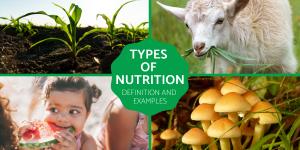
Have you ever wondered how a giant oak tree gets its energy, or how a tiny bacteria living in the deep sea thrives? The answer lies in a fascinating concept called nutrition, the process by which living things obtain the essential building blocks and fuel to carry out their vital functions. While all organisms...
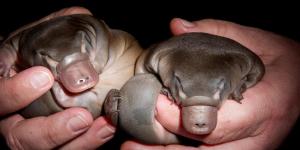
If I was to describe an animal with webbed feet, a beak and the ability to lay eggs, you would be forgiven for assuming I was talking about a bird. Oddly enough, this description also fits the platypus (Ornithorhynchus anatinus), the only animal in its genus. It is a fascinating creature which has befuddled...
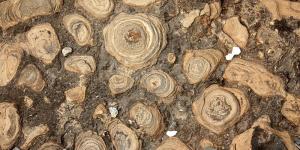
Fossils are the preserved remains of living organisms that have inhabited the planet thousands of years ago. This preservation occurs due to various processes which have allowed the remains of bodily structures to be observed today. Collectively, these processes are known as fossilization which causes...

The Kung Fu Panda franchise has captivated audiences of all ages with its blend of action, humor, and heart. Spanning four films (and potentially more!), the saga takes place in the idyllic Valley of Peace, a place inspired by Ancient China but inhabited by a most unusual cast – animals who are masters of...
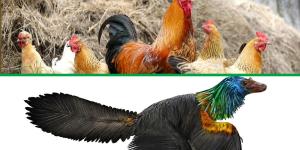
The origin of birds has been one of the most controversial topics in evolutionary biology. There have been several proposed theories about their origin which has led changing taxonomy over the years. Just as the animals themselves have evolved, so has our understanding of them. It is notoriously difficult...
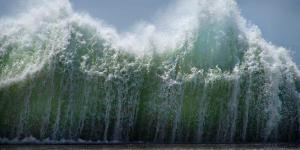
Tsunamis, often referred to as "seismic sea waves," are natural disasters that can cause widespread devastation along coastlines. Mostly triggered by underwater movements like earthquakes or eruptions, these massive waves begin as ripples in the open ocean, transforming into towering walls of water as they...

The classification of the octopus within the realm of mollusks has long sparked debate among scientists. Traditionally, octopuses have been grouped alongside their shelled relatives like snails and clams, owing to shared characteristics such as a soft body, bilateral symmetry, and a mantle. However,...
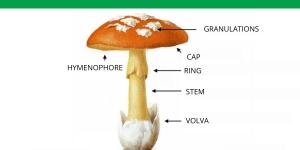
While many appreciate mushrooms primarily for their culinary uses, their significance extends far beyond the kitchen. These intriguing organisms play essential roles in our ecosystems, aiding in processes like decomposition and forming symbiotic relationships with plants. But beyond their utility, what are...
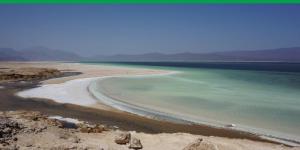
The Dead Sea is a salt lake which borders the West Bank, Israel and Jordan in the Middle East. In addition to being a tourist destination, it is of very important ecological value for the area, although not in the same way as most other bodies of water. This is due to the high salinity of the water which...
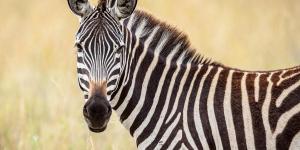
Zebras, iconic inhabitants of the African savanna, are immediately distinguishable by their mesmerizing black and white stripes. Beyond their aesthetic charm, zebra stripes play pivotal roles in their survival, contributing to camouflage, social communication, and protection against parasites. While the...

The shortest beach in the world is Playa de Gulpiyuri, an inland beach in the North of Spain. It is important to keep in mind that the criteria to determine the smallest beach can vary. For example, some may use the length of coastline, but others may consider the total land area of sand to be the most...
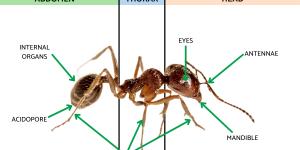
The anatomy of the ant is structured in such a way as to make them one of the most industrious creatures in nature. Famous for their ability to carry weights much greater than their own, ants have many specialized body parts which allow them to carry out various roles and functions within the ant colony....

The daily spectacle of sunrise and sunset, with its breathtaking colors and shifting shadows, has captivated humanity for millennia. But have you ever stopped to consider the science behind this seemingly simple phenomenon? The truth is, the Sun's daily journey across the sky is not due to the Sun itself...
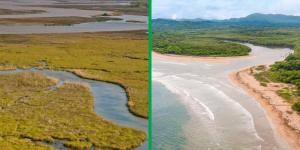
Among the differences between deltas and estuaries, we can include their shape, the composition of water, the process of sediment deposition and biodiversity. Although they are environments that can often coexist, they are not the same.
A delta is an area where sedimentation predominates, forming a...

The hybrid eclipse is a fascinating celestial phenomenon that goes beyond its visual allure. During this event, the Moon and Sun exhibit a unique interplay, showcasing both an "annular ring" and, in certain locations, a brief moment of "total darkness." Apart from its captivating appearance, the hybrid eclipse...
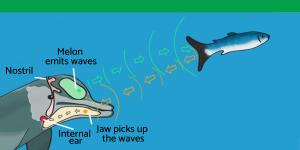
Ever wondered how some animals navigate and hunt in the dark with seemingly superhuman precision? The answer lies in a remarkable adaptation called echolocation, a biological sonar that allows them to "see" with sound. From the fluttering wings of a bat to the graceful glide of a dolphin, echolocation...

Ever noticed that unique earthy scent following a fresh downpour? That's not just dampness – it's petrichor, a fascinating phenomenon with a scientific explanation hidden behind its captivating aroma. This seemingly simple "smell of rain" is actually a complex interplay between the ground beneath our...

The asthenosphere is a layer of the upper mantle of Earth located below the lithosphere. Despite the great difficulty in accessing the various layers of the Earth, the geographical sciences have allowed us insight into the different layers which make up the Earth. The three main parts are the Earth's crust,...

Islands can be classified according to their geological origin into continental islands, oceanic islands, coral islands, sedimentary islands, river islands and artificial islands. A basic definition of an island is a portion of land surrounded by water throughout their entire perimeter. They are often...
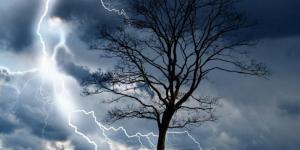
Trees, with their towering heights and expansive canopies, have long been associated with lightning strikes. This perception has fueled a common belief that trees actively attract lightning, drawing its powerful energy from the sky. While this notion might seem like a myth, there is a scientific basis for...
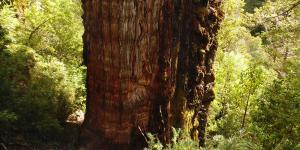
The world's oldest tree is the Great-Grandfather Tree, a huge Patagonian cypress (Fitzya cupressoides) that is estimated to be over 5,400 years old. It is located in Chile in South America. What is quite amazing is that it is only recently that this tree was discovered to be the oldets in existence. This...
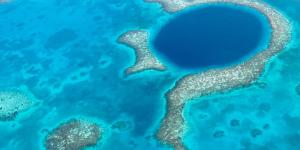
The Great Blue Hole, a vast sinkhole located in the Lighthouse Reef of Belize, is a renowned natural landmark that stands out for its immense size, remarkable depth, and captivating history. This cylindrical depression, carved into the limestone bedrock of the Belize Barrier Reef. The Great Blue Hole's...

A sea cliff is a geographic landform characterized by a steep or vertical slope on the coastline of a country or other area. It is formed by the erosion of layers of rock or soil by the sea water. The exposure of harder or resistant layers that remain creates a steep wall. Cliffs can be found in various...
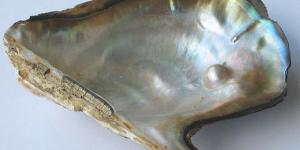
Pearls are unique gemstones produced by certain mollusks, such as oysters and mussels, in response to the intrusion of an irritant, often a grain of sand or a parasite, into their shells. These precious gems are formed through a process known as biomineralization. In an effort to protect themselves...

Did you know that some mammals can fly? Unlike most mammals, which live on land, these flying mammals have unique body parts that help them move through the air. Bats are the most well-known flying mammals, but there are other kinds, like flying squirrels and colugos. Furthermore, these flying mammals...

We may think that the formation of icicles simply requires water and freezing temperatures, but there is a complex interplay of factors that results in icicles forming. One of these important factors is gravity. It also requires a fluctuation in temperature that allows water to freeze and melt. We can...

The different types of solar and lunar eclipses are total solar eclipse, partial solar eclipse, annular solar eclipse, total lunar eclipse, partial lunar eclipse and hybrid eclipses. Eclipses are phenomena that have intrigued humanity throughout history. They are astronomical events in which a celestial...

In the realm of Disney's animated classics, few duos have captured the hearts of audiences quite like Timon and Pumbaa, the inseparable pair from "The Lion King." Their significance in popular culture extends beyond mere entertainment; they embody a philosophy of carefree living and a celebration of...

Dotted across the globe, amidst arid landscapes and towering mountain ranges, lie salt lakes – fascinating expanses of salty waters that support a unique array of life forms. These saline wonders, characterized by their exceptionally high concentrations of dissolved salts, hold significant ecological importance,...

The question of whether animals feel pain has long intrigued scientists and philosophers. While a conclusive answer remains elusive, research indicates that animals, ranging from insects to mammals, do indeed experience pain similarly to humans. They possess nociceptors—specialized sensory neurons responsible...

Butterflies and moths are among the most cherished and recognizable insects globally. Their vibrant wings and graceful flight patterns bring joy to many. However, while these two insect groups belong to the order Lepidoptera, encompassing over 180,000 described species, they exhibit distinguishing features...

The difference between a reservoir and a lake is to do with artificiality. Both are large bodies of water with similar features, something that can make it easy to confuse them. Generally speaking, a lake is much more diverse. It can have different types of water and nearby geological structures can influence...

Lakes and swamps are both bodies of water, but they have some key differences. Lakes are typically larger and deeper than swamps, with a well-defined shoreline. These differences in physical characteristics lead to a number of other differences between lakes and swamps, including the types of wildlife that live...

Whales and dolphins beaching themselves is a mysterious and upsetting event that has been studied by scientists, conservationists, and the public for many years. These amazing marine animals, known for their grace and ability to live in the ocean, sometimes do something that goes against their nature: they...

In the realm of household pests, bed bugs hold a notorious reputation for their stealthy habits and unwelcome presence. These tiny, blood-sucking insects have mastered the art of concealment, often lurking in the depths of mattresses, bed frames, and furniture crevices. However, one question often arises...

The captivating pink hues of pink lakes emerge due to the presence of microscopic organisms that flourish in these high-salinity environments. These tiny life forms produce carotenoid pigments, including beta-carotene, which give the lakes their characteristic pink color. Ranging from delicate blush to...

Imagine being the tallest land mammal on Earth. You have a long neck that allows you to reach leaves high up in trees, but it also makes you a target for predators. How do you stay safe while you sleep? Giraffes have evolved a unique sleeping habit to help them survive.
In this article, we will explore...

Seismic waves are movements that propagate through the Earth in response to the sudden release of energy within the Earth. The types of seismic waves that exist are P waves, S waves and surface waves; which are divided into Love waves and Rayleigh waves. The detection and analysis of these seismic waves...

The albedo effect is a measurement used in geoscience which helps us to understand the effects of climate change and global warming. Essentially, the albedo effect is a measurement of the properties of light reflected from a given object. The lighter the surface, the greater its ability to reflect radiation...

The cow's stomach is polygastric, meaning it is made up of multiple digestive cavities. In the case of cows, they are an animal with 4 different stomach compartments. The parts of the cow's stomach are the rumen, reticulum, omasum and abomasum. Within these different cavities, the food is fermented to extract...

If you could venture to the world's coldest locations, where would you choose to go? From the icy expanses of Antarctica to the frozen tundras of Siberia, these places boast some of the most extreme and captivating landscapes our planet has to offer. However, a word of caution: these destinations are not...

Biophilia hypothesis is the theory that humans have an innate affinity towards nature. It is not a theory about simple human preference, but a scientific approach to evolution which is believed to confer many benefits onto both humans and nature as a whole. When applied to the ecology, these benefits...

The troposphere is the lowest layer of Earth's atmosphere and is also the most important layer of the atmosphere for life on Earth. It contains the air we breathe and the water vapor that forms clouds and precipitation. The troposphere also plays a vital role in regulating the planet's climate. However,...
